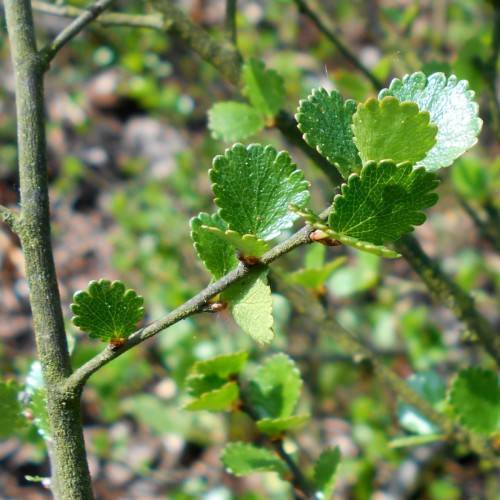
Arctic Dwarf Birch
Betula nana subsp. nana
Watering:
Frequent
Hardiness Zone:
Sun:
full sun,part shade
Leaf:
Yes
Growth Rate:
Low
Salt Tolerant:
Yes
watering
Betula michauxii x var. pumila hybrid plants are drought-tolerant and prefer to stay on the slightly dry side. They should be watered once per week, depending on the weather and season. During dry or hot weather, water more frequently, once every 4-5 days. When watering, provide a deep, thorough soaking and allow the soil to dry out for 2 days between waterings. Be careful to not over water the plant as this can lead to root rot.
sunlight
Betula michauxii x var. pumila hybrid is a hybrid of 2 species of birch trees. In locations where B. michauxii and var. pumila are found in the wild, they receive an average of 4 to 8 hours of direct sunlight per day. During peak sunshine months, hours of sunlight may be slightly higher. In general, this hybrid species prefers full sun to partial shade when planted indoors or outdoors, and should not be placed in complete shade. During the summer months, the hybrid species should receive 6 to 8 hours of sunlight daily in order to maintain optimal health and promote proper growth. The hybrid may tolerate a limited amount of shade in regions with intense summer sunlight.
pruning
Pruning for B. Michauxii X B. Pumila Var. Pumila Hybrid (Betula michauxii x var. pumila) should take place during the fall and winter months, when the tree is dormant. Pruning should be done to maintain the desired shape or size, thin out the canopy, remove dead branches, or improve the tree's structure. Pruning should be done carefully, as to preserve the natural shape of the tree. Generally, it is best to remove no more than 1/3 of the living tree branches in 1 pruning session. This will help to maintain the quality of the tree and reduce stress, shock and decay. It will also promote vigorous growth. All dead and diseased branches, as well as any crossing or damaged branches, should be removed, no matter how long the tree has been growing. This will help to reduce the chance of insects and diseases.
